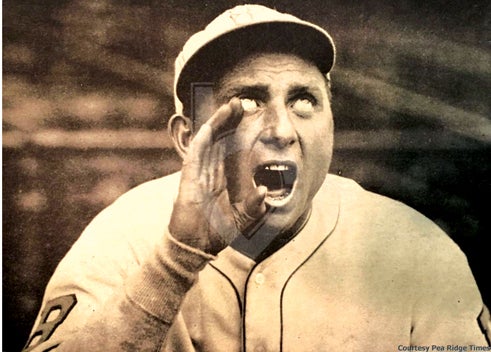Brains and Brawn… Bob Peoples the Hometown Hero: Part 1
Published 11:08 pm Thursday, June 2, 2022
|
Getting your Trinity Audio player ready...
|
Bob Peoples returned from his most recent and disappointing lifting outing in 1948. The competition in Detroit was the first time in his career that he was unable to increase his best deadlift.
Bob’s wife, Juanita, mentioned that many times he became very frustrated after particularly difficult periods of training where there were few results to show for all the hard work. With this being the only time that he was unable to improve his lift at a competition, he was undoubtedly disappointed.
Many times, it is extremely difficult for many high achieving athletes to come to grips with reality when they finally consider that their bodies can no longer do what their hearts desire.
There is also a feeling of loss of friends as they no longer hang in the same circles with other athletes and acquaintances who have the same drive, desire, and dreams.
A feeling of lack of purpose, pent up emotional and physical energy, and even depression often happens as so many try to adapt to “retired life”. It is very difficult for athletes that are so driven to relearn how to focus their energy and derive personal worth without their competitive outlet and physical accomplishments.
It is not uncommon for athletes to do drastic things during these times as they feel lost while trying to find their new sense of self. Sometimes, these drastic things are so out of character that no one could have ever predicted them.
Sadly, many athletes have even taken their own lives. Recently, famous athletes such as Junior Seau from the NFL, Wade Belak from the NHL, and Bill Robinzine of the NBA had difficult times adapting to their ending professional careers and took their lives in tragic ways.
But this is not a recent phenomenon, as athletes from Peoples’ day, and even before, were not immune.
There were over a dozen professional boxers in the early 1900’s who chose suicide when their careers were over including two world champions from the 1950’s Freddie Mills and Randolph Turpin.
There were even more professional baseball players who ended it all including Drummond Brown, Benny Frey, Charlie Hollocher, Ike Van Zandt, Jimmy McAleer and a whole host of others. Many chose a firearm, some hanging, while others used poison (such as the lethal and easily obtained illuminating gas or “coal gas” which was used in early electric lighting).
The story of Clyde “Pea Ridge” Day was the classic example of the mental difficulties in dealing with life after a famous sporting career. Day started to fame as a champion Arkansas hog caller, but his real talent would lie in baseball.
He was a master of a pitch called the screw ball which can be notoriously hard on both the shoulder and the elbow of the pitcher. He was also famous for his showmanship and competitive spirit.
Often, after striking out the last batter in an inning, he would remove his glove, cup his hands to his mouth, and let out a loud “Yip Yip Yeeeee!” hog call to celebrate.
After playing with over a dozen teams, his tendons in his arm were shot. In 1933, his final team, Baltimore, released him. He wanted to be back in the major leagues so badly that he underwent a very complicated surgery at the Mayo Clinic to restore his arm.
This surgery cost him $10,000 out of his own pocket. In today’s money this would be between $150, 000 to $200,000. Unfortunately, the surgery was unsuccessful.
In the apartment of his former teammate, Max Thomas, he slashed his own throat with a butcher knife. Sadly, he left a wife and a 3-week-old son behind. He was only 34 years old.
So, it was natural that Peoples was a little “down in the dumps” after his return from Detroit. Especially when no calls or offers ever materialized from his photo shoot with the famous master of male physique photography, Douglass Juleff.
This could have been another one of those times when Peoples gave into his fits of agitation, but that was before he received the big news.
When peoples heard what was being planned just a few miles from his little farm in Sinking Creek, he was ecstatic. Any depression or frustration he was experiencing quickly evaporated with this possibility.
Bob Peoples, the world’s strongest man, would get a chance to do something he had only dreamed of. He had waited nearly 40 years for this chance, now, in a few short months, this golden opportunity would be his.
To be continued…






